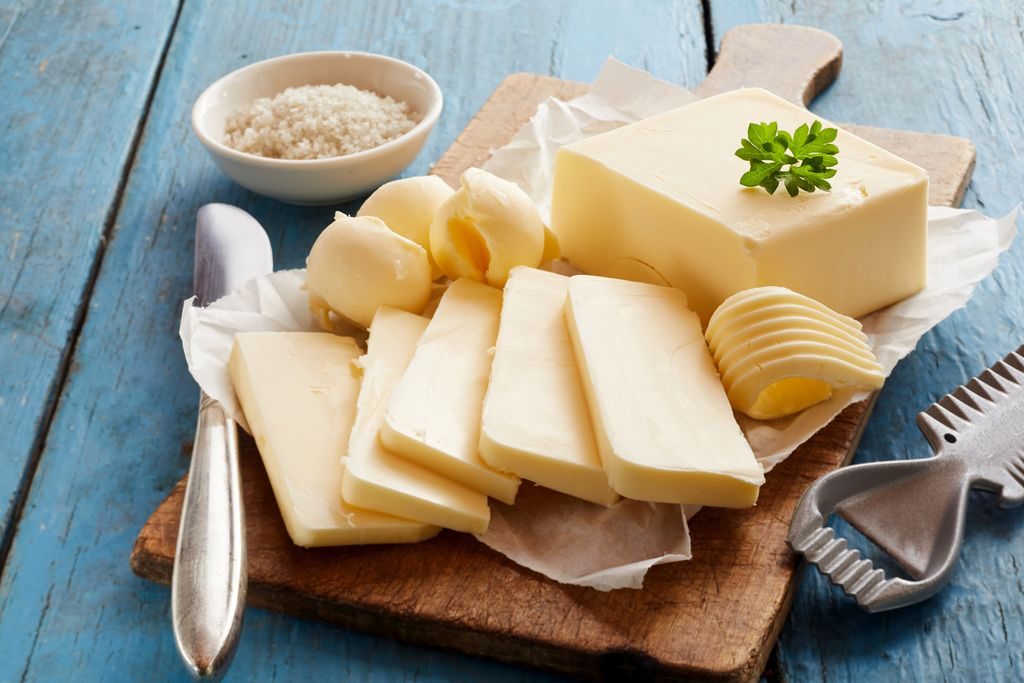Salted butter
Butter is a kitchen essential. it gives cakes, and pastries their wonderful rich texture. It can be added to sauces, creamed into icing, or simply spread onto a piece of toast!

Salted butter is such a versatile ingredient, it serves multiple purposes in cooking. Butter is used a lot in baking, it gives cakes and cookies that addictive buttery taste. Butter can be used to grease tins so baked goods don’t get stuck. It’s a common ingredient in sauses, like hollandaise and bechamel. Butter also plays a key role in keeping making flaky pastry.
Salted vs unsalted butter
In recipes do you ever notice specifying unsalted butter, then as you read further it calls for a pinch of salt? There can be many reasons for this and hopefully, we can clear it up for you!
The first reason is that unsalted butter is fresher than its saltier counterpart. Salt is a natural preservative and so salted butter tends to last longer (between 3-4 months).
Using unsalted butter can also give you more control over taste. You have a better idea of the outcome, especially when it comes to baking and you can’t balance flavours once you’ve closed the oven door! Another contributing factor is that the amount of salt in each stick of butter varies from brand to brand. This is a factor you need to consider if you want to watch your sodium intake!
Our last reason is that salted butter has a higher water content than unsalted! This is said to influence the texture of what you are baking by making some things tougher and denser.
Substituting one for another
A good rule of thumb when it comes to swapping unsalted for salted butter is to deduct ¼ teaspoons of salt from every 100g in the recipe.
Salted butter nutrition
Butter is about 80% fat, and the rest is mostly water. There are usually about 717 calories per 100g of butter. it is made from the fatty portion of milk once it has been isolated from the protein and carbs. Butter is one of the most complex of all dietary fats, containing more than 400 different fatty acids.
Butter contains vitamins A, D, E, B12, and K2. However, the benefits are quite small because we usually we consume butter in such small quantities these vitamins don’t contribute much to our total daily intake.
Making it at home
Butter is surprisingly easy to make at home! All you need is…
- Good quality whipping cream
- A teaspoon of salt
- An electric whisk
- A cheesecloth
- …and a bit of patience.
Simply whisk until the cream separates into buttermilk and butter. You will then need to remove all the buttermilk. You can simply strain it with a cheesecloth. Once all the buttermilk has been removed you can add a bit of salt.




